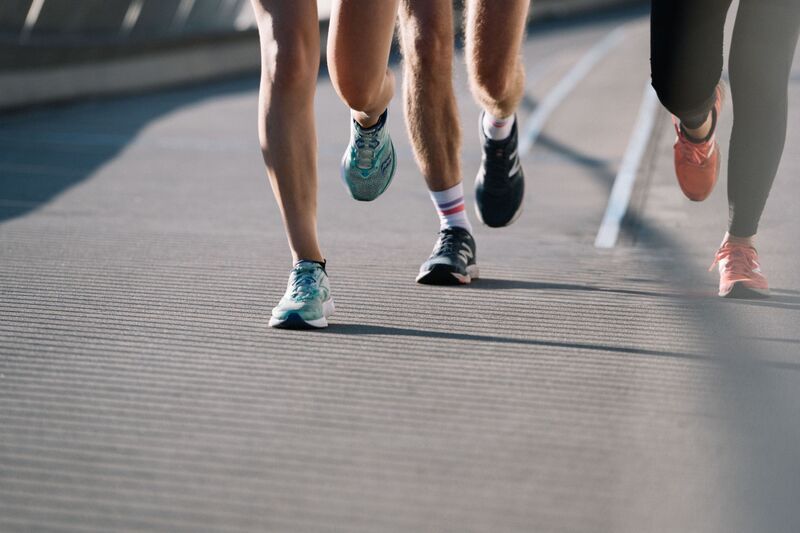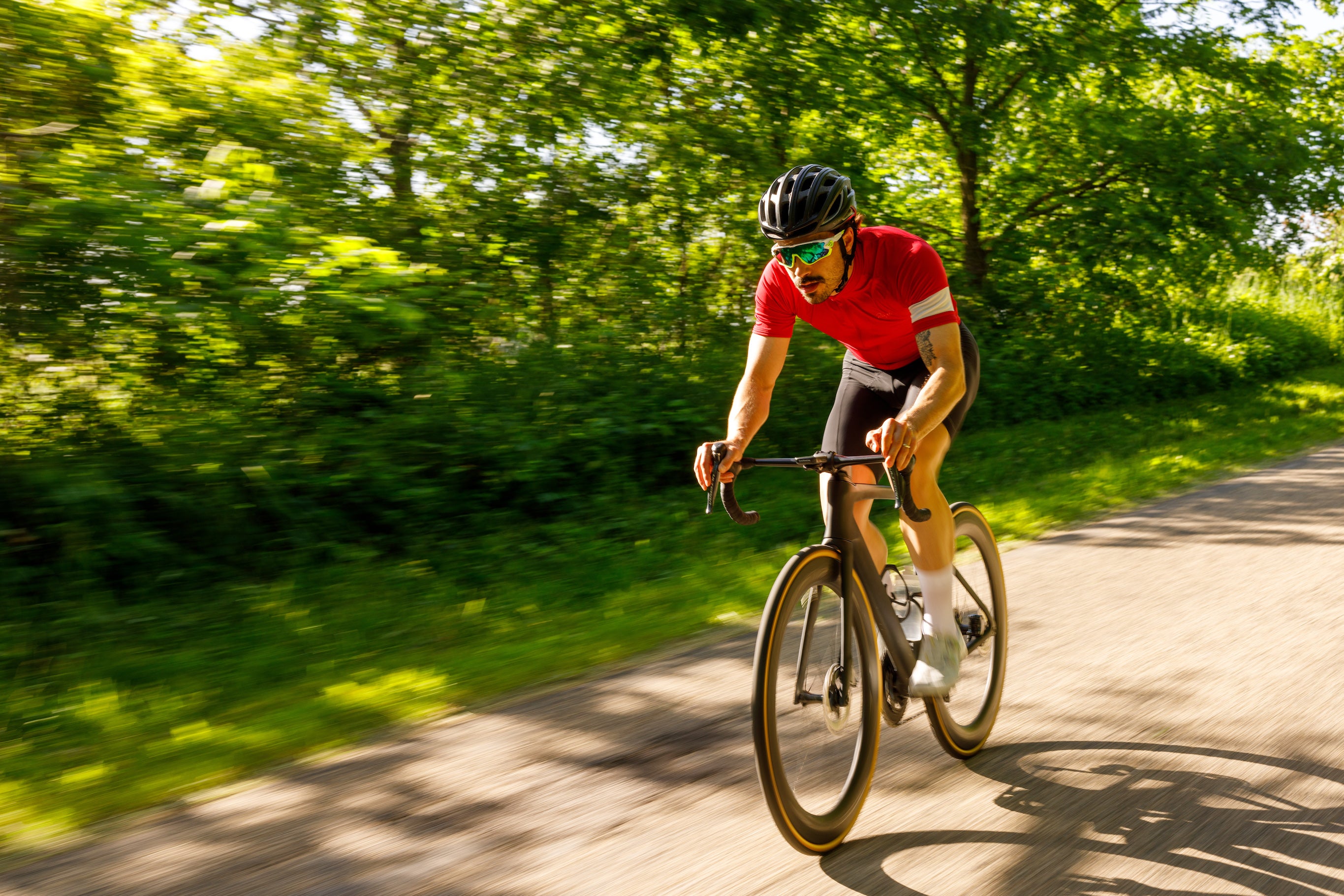HEALTHY AT WORK

5 TIPS: FIT AND HEALTHY IN EVERYDAY WORKING LIFE
A healthy lifestyle is also important during a working day in order to stay fit and healthy. It is important to note that everyone is different and needs to find different strategies that suit their individual lifestyle. Experiment and find out which habits and routines work best for you to stay fit and healthy. Here are some tips to help you do just that:
IN BRIEF
- Tip 1: Regular exercise
- Tip 2: Ergonomics at the workplace
- Tip 3: Healthy eating
- Tip 4: Social interactions
- Tip 5: Organization and time management
TIP 1: REGULAR EXERCISE

Regular exercise during the working day can be a challenge, especially if you spend a lot of time at your desk. Therefore, try to incorporate regular exercise into your working day. Small bursts of exercise can make a big difference.
If possible, use a height-adjustable desk or a standing desk. This allows you to alternate between sitting and standing while you work. Use your breaks actively instead of spending them completely at your desk. Stand up, go for a walk or do some simple stretching exercises to loosen up your muscles. If the nature of the meeting allows, suggest that you go for a walk during the meeting. Instead of sitting in the conference room, you can get some fresh air outside and discuss important topics.
Avoid the elevator and take the stairs instead. Climbing stairs is an easy way to increase your heart rate and strengthen your leg muscles. If possible, you can make part of your commute active. Ride your bike to work, get off the bus or train one stop early and walk the rest of the way.
Set a timer to remind you every 30-60 minutes to take a short movement break. Stand up, stretch, do a few squats or walk in place. Use your lunch break to be active. Go to a nearby gym, take a walk in the park or do another form of exercise that you enjoy. Dare to go for a run. We have put together 10 tips for beginners here. There are also special exercises that you can do at work, such as leg lifts, arm circles, squats or wall push-ups. These exercises are discreet and can help to keep your body moving.
Remember that every form of exercise counts, even if it's just short bursts of activity. It's about incorporating as much movement as possible into your working day and avoiding a sedentary lifestyle.
TIP 2: ERGONOMICS AT THE WORKPLACE

Make sure that your workplace is ergonomically designed. Good posture and a pleasant working environment can help to prevent back and neck pain. Simply check your workplace and pay attention to the following things:
Make sure your chair is adjusted correctly. Your feet should be flat on the floor or resting on a footrest. Keep your knees at a right angle and leave enough space for your thighs. The back of the chair should support your spine. Your desk should be at an appropriate height. Your forearms should be able to rest at a 90-degree angle while you type or work on the keyboard. If necessary, adjust the height with a height-adjustable desk or table top. The screen should be at eye level so that you don't have to constantly tilt your head up or down. Place the screen about an arm's length away from you and at a distance of approx. 50-70 cm. Use a monitor stand or laptop holder if necessary.
Make sure there is sufficient lighting at the workplace. Your eyes will thank you for it. Avoid dazzling light from windows or lamps and use a desk lamp instead. If you make frequent phone calls, use a headset or hands-free kit to avoid an unnatural head and neck posture. Depending on your needs, you can use ergonomic aids such as a height-adjustable desk, ergonomic chairs, footrests, wrist rests or an ergonomic mouse and keyboard to further improve your working environment.
Also make sure you wear good shoes and always remember: no shoe is finished. You can replace the flat standard insole with a suitable CURREX. You can find out which model fits best here: Insolefinder
TIP 3: HEALTHY EATING

A healthy diet in everyday working life is crucial for staying energized, focused and promoting well-being. If you pay attention to a few things, you can stay balanced and fit in no time at all.
Plan ahead and prepare healthy meals and snacks for the working day. This will help you avoid choosing unhealthy options or resorting to unhealthy snacks. Make sure your meals are balanced and contain all the important nutrients. Use a combination of whole grains, lean protein (such as chicken, fish, tofu), healthy fats (such as avocado, nuts, seeds) and a variety of fruits and vegetables.
Very important: don't skip breakfast. Start the day with a healthy breakfast. It can help boost your metabolism and give you energy for the working day. Keep healthy snacks such as nuts, fruit, vegetable sticks or yogurt to hand. These snacks can fill you up between meals and prevent you from reaching for unhealthy options. Drink plenty of water. Dehydration can lead to fatigue and difficulty concentrating. Keep a water bottle on your desk and drink regularly. Try to avoid sugary drinks such as soft drinks, sweetened juices or energy drinks. These provide empty calories and can lead to a drop in energy. Drink water or unsweetened tea instead.
Organize lunches together with colleagues. This is not only fun, but can also help to maintain healthy eating habits. Pay attention to portion sizes and try not to eat too much. Use smaller plates or bowls to prevent you from automatically eating too much. Try to avoid fast food options as these are often high in saturated fats, sugar and sodium. Instead, prepare healthy meals at home or look for healthy restaurants near your workplace.
TIP 4: SOCIAL INTERACTION

Maintain social contacts, both inside and outside of work. Spend time with family and friends to increase your well-being and reduce stress. Studies have shown that social interaction can have positive effects on physical health. People who are regularly socially active often have a lower risk of chronic diseases such as cardiovascular disease or diabetes. To benefit from these advantages, you can take the following steps:
Spend time with family and friends. Organize regular get-togethers with your loved ones and cultivate relationships that are important to you. Look for groups or organizations that have similar interests to yours. Participating in local sporting events, clubs or volunteering can give you the opportunity to meet new people and socialize.
Use technological means if you find it difficult to engage in direct face-to-face social interactions. You can use technology such as video calls or social media to stay in touch with others.
And most importantly: be open to new contacts. Join courses where you can meet people with similar interests. With a running or sports course, you can kill two birds with one stone: healthy exercise and social interaction.
TIP 5: ORGANIZATION AND TIME MANAGEMENT

Effective time management can help to make your working day less stressful. A well-planned day helps you to reduce stress by giving you a clear overview of your tasks and dividing them into sensible time blocks. This will help you avoid overworking and give you more control over your work.
Sort your tasks according to their importance and urgency, so you can ensure that you focus your time and energy on the most important tasks. This helps you to concentrate on the essentials and avoids wasting time. Healthy time management also includes planning breaks, recovery time and relaxation activities. By consciously reserving time for yourself, you can regenerate, reduce stress and promote your health. You should also learn to set clear boundaries. Learn to say "no" when you are overloaded and make sure you maintain a healthy work-life balance. Effective time management will help you to increase your efficiency and work more productively. By minimizing distractions, structuring tasks efficiently and avoiding procrastination, you can achieve more in less time and thus reduce stress. Also, always remember to get enough sleep, as it is very important for your mental and physical health.
WOW - so many tips for a healthy lifestyle. Get started today and implement the first tips. We wish you lots of fun!
And if your feet pinch or your knees hurt, let us know. The CURREX insoles optimally distribute the load on your joints and give your run that extra boost.









